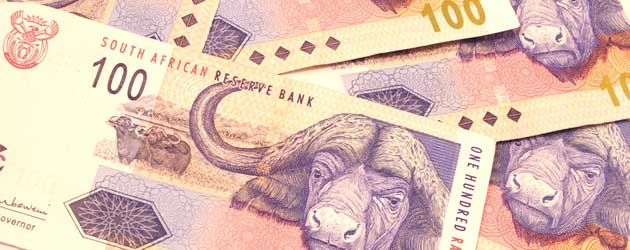Pound South African Rand (GBP/ZAR) Exchange Rate Rallies as South African PMI Plummets to 10-Year Low
UPDATE 01/10/2019: The Pound Sterling South African Rand (GBP/ZAR) exchange rate continued to rally on Tuesday, and the pairing is currently trading around R18.7930.
The South African Rand remained under pressure on Tuesday as the country’s Absa manufacturing PMI plummeted to its lowest level in 10 years.
Weak demand linked to fears of both slowing domestic and global growth sent September’s figure from 45.7 to 41.6.
This was the lowest reading since August 2009, and the eighth time since the start of 2019 that the index has remained below the 50 no-change mark.
In a statement, Absa stated:
‘It is unlikely that the South African manufacturing sector will improve on a sustained basis at a time when our key trading partners are struggling.
‘Indeed, while the September PMI already paints a dismal picture of current conditions, respondents expect the environment to worsen further going forward.’
Pound South African Rand (GBP/ZAR) Exchange Rate Rallies as Households Help Drive UK Growth
The Pound Sterling South African Rand (GBP/ZAR) exchange rate rallied, and the pairing is currently trading around R18.6632.
On Monday, the Office for National Statistics (ONS) confirmed the UK economy shrank at a rate of -0.2% during the second quarter.
The economy contracted as the effects of the stockpiling boom before the original Brexit deadline wore off.
Commenting on the data, ONS head of GDP Rob Kent-Smith said:
‘Headline GDP remained unrevised in the latest quarter with the economy contracting, partly due to a fallback in manufacturing following the UK’s originally planned EU departure date.
‘Improved data sources and new methods mean our estimates now show households have been lenders in recent quarters. People have been donating less to charity than previously thought as well as receiving more money from renting out homes.’
However, the Pound received an upswing of support as the ONS showed the economy expanded by 0.6% in the first quarter, upwardly revised from 0.5%.
This lifted the annual UK growth rate to 1.3% from 1.2%, showing the country’s financial health was not as fragile as first thought.
Data confirmed that household and government spending were among the few things that drove growth during the second quarter as business investment fell once again.
South African Rand (ZAR) Slumps as Risk Appetite Falls
The South African Rand was left under pressure on Monday as data revealed the country’s credit demand growth slowed to 6.86% in August.
The central bank’s data showed this was down from 7.19% in the previous month.
Added to this, risk appetite eased as investors continued to watch the developments in the ongoing US-China trade dispute.
The risk-sensitive Rand took a hit following reports on Friday that the Trump administration were considering new radical financial pressure tactics such as possibly delisting Chinese companies from US stock exchanges.
Commenting on this, Treasury Partner at Peregrine Treasury Solutions, Bianca Botes noted:
‘The pressure on emerging markets is mounting, as the US continues to make waves in the global markets.
‘Washington announced over the weekend that the US was investigating ways to limit its portfolio investment flows to China, although the US Treasury subsequently denied plans to block Chinese listtings on US stock exchanges.’
Ramaphosa: Government Will Soon Finalise a Clear Economic Growth Strategy
Meanwhile, South African President Cyril Ramaphosa stated that the government will soon finalise a clear economic growth strategy.
This comes as South Africa aims to boost confidence as the economy is facing both lower growth and job cuts.
Added to this, investor confidence remains fragile and lack of clarity and progress on reforms remains a looming dark cloud over the country’s economic growth outlook.
In his first weekly messages to the nation, known as ‘From the Desk of the President’, Ramaphosa stated:
‘Building on the stimulus and recovery plan, government will finalise a clear economic growth strategy within the next few weeks.
‘[The work was] taking place at a time when government’s finances are under great strain, and there is very little room to increase spending or borrowing.’
However, this could do little to buoy the South African Rand against Sterling as investors’ appetite for riskier assets remained subdued.
Pound South African Rand Outlook: Will ZAR Extend Losses?
Looking ahead to Tuesday, the South African Rand (ZAR) could continue to slide against the Pound (GBP) following the release of September’s ABSA manufacturing PMI.
If the manufacturing PMI slides further than expected into contraction, it is likely the Rand will be left under pressure.
Meanwhile, the Rand could slide further if business confidence data from SACCI reveals September’s confidence did not edge up as high as expected.
Disappointing confidence data would likely cause the Pound South African Rand (GBP/ZAR) exchange rate to rise.


Comments are closed.